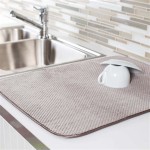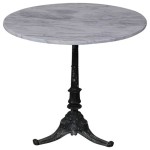Gather Your Supplies
Before you begin the installation process, make sure you have the right tools and materials for the job. You will need a set of adjustable pliers, slip joint pliers, an adjustable wrench, a basin wrench, a utility knife, a Phillips head screwdriver, and some Teflon tape. You should also have the faucet and the mounting hardware that comes with it.
Turn Off the Water Supply
To begin, you will need to turn off the water supply to the kitchen sink. This can usually be done by turning a valve located under the sink. Make sure the water is completely shut off before proceeding.
Remove the Old Faucet
Using your adjustable or slip joint pliers, remove the old faucet from the sink. Make sure you keep all of the mounting hardware to use with the new faucet. If necessary, use the adjustable wrench to loosen any stubborn nuts or bolts.
Install the New Faucet
Using the mounting hardware from the old faucet, attach the new faucet to the sink. Make sure the connections are tight and secure. If necessary, use the basin wrench to reach the nuts and bolts in tight spaces.
Connect the Water Supply Lines
Next, connect the water supply lines to the faucet. Make sure the connections are tight and secure. Use the Teflon tape to wrap the threads and help prevent leaks. Once the connections are secure, turn the water supply back on and check for leaks.
Secure the Faucet in Place
Once the connections are secure and the water is turned back on, you can use the mounting hardware to secure the faucet in place. Make sure the connections are tight and secure. Use the Phillips head screwdriver to tighten the screws and the adjustable wrench to tighten the nuts and bolts.
Testing the Faucet
Once the faucet is securely in place, you can test it to make sure everything is working properly. Turn on both the hot and cold water and check for leaks or other issues. Make sure the water pressure is sufficient and that the flow is consistent.
Cleaning Up
Once you have finished installing the faucet and testing it, you can clean up the area. Make sure to wipe down the sink and countertop and dispose of any excess materials. You can also use the utility knife to cut off any excess Teflon tape.















Related Posts








